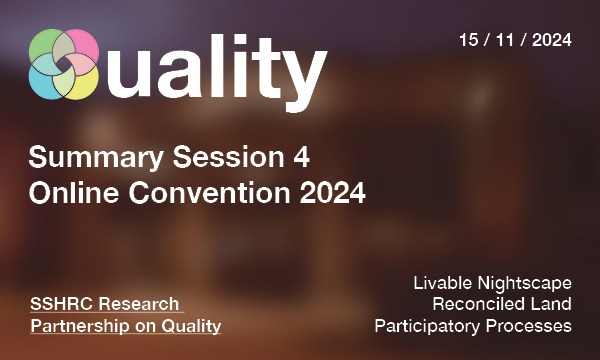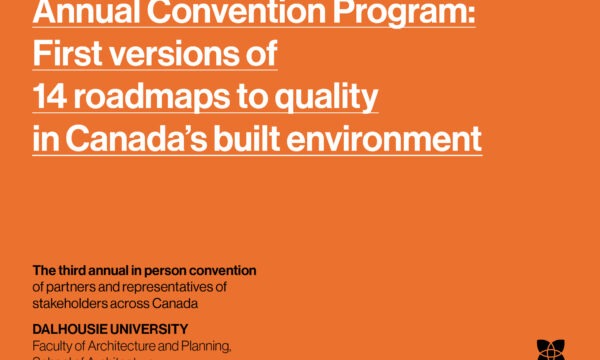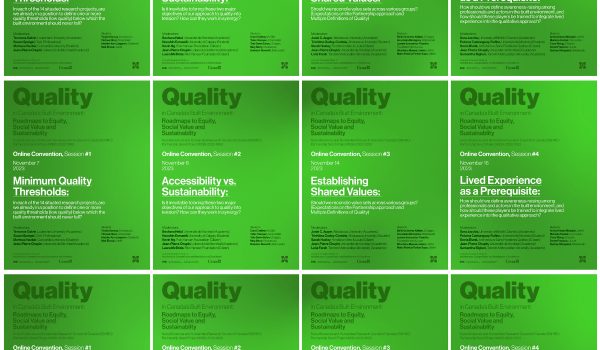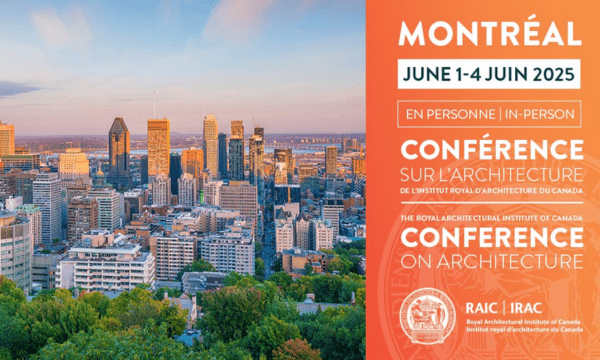This post summarizes the second session of the third online convention in our SSHRC partnership project. Presentations from four of the 14 participating teams explored adaptive reuse, accessible and inclusive design, equitable waterfronts, and the long-term impacts of rapid residential construction. Discussions focused on translating research into actionable strategies to address complex urban challenges.
*Please note that the following summary was created with the help of an AI tool (fireflies.ai).
Summary
🏗️ Introduction and Project Overview (00:01 – 07:49)
Jean-Pierre Chupin introduces the third online convention of a partnership grant project
- This online convention is part of a larger partnership grant project funded by the Social Sciences and Humanities Research Council of Canada, involving 14 teams across Canada.
- The focus of the convention is to prepare teams for presenting their work to a wider audience, emphasizing clarity and brevity in their presentations.
- Participants are encouraged to engage in discussions about the implementation of research findings into practical actions within the community.
Project funded by Social Sciences and Humanities Research Council of Canada
- The Social Sciences and Humanities Research Council of Canada (SSHRC) funds research that addresses complex societal issues through the lens of social sciences and humanities.
- SSHRC supports collaborations between researchers, community organizations, and policymakers to foster innovative solutions and enhance public engagement.
- The funding aims to promote knowledge mobilization, ensuring that research findings are accessible and applicable to real-world challenges faced by communities across Canada.
14 teams across Canada participating
- 14 teams from various universities across Canada are collaborating on a research project funded by the Social Sciences and Humanities Research Council of Canada.
- The project focuses on addressing complex urban issues such as adaptive reuse, accessibility, and equitable waterfronts.
- The initiative aims to create actionable roadmaps for improving quality in the built environment through interdisciplinary collaboration and public engagement.
Focus on moving from research to action
- Research findings should be translated into actionable strategies that address real-world issues, ensuring that the insights gained are effectively implemented in practice.
- Collaboration with stakeholders, including community members and policymakers, is essential to identify barriers and co-create solutions that are relevant and sustainable.
- Regular evaluation and feedback mechanisms should be established to assess the impact of implemented actions and to refine approaches based on lessons learned.
Four teams presenting on diverse issues: adaptive reuse, accessible qualities, equitable waterfronts, transparent construction
- Adaptive reuse focuses on repurposing existing buildings to enhance sustainability and preserve cultural heritage, addressing the challenges of vacant structures in urban environments.
- Accessible qualities emphasize the importance of designing spaces that accommodate individuals with disabilities, ensuring inclusivity and equal access to public buildings and services.
- Equitable waterfronts aim to create accessible and community-oriented waterfront spaces that balance public and private interests, fostering social interaction and environmental stewardship.
🔄 Carleton University Presentation on Adaptive Reuse (08:00 – 19:08)
Lia Di Giulio presents on incentivizing adaptive reuse
- Adaptive reuse can significantly contribute to sustainability by reducing waste and preserving existing structures.
- Incentives for adaptive reuse may include financial support, regulatory flexibility, and community engagement to overcome barriers.
- Collaboration among architects, developers, and policymakers is essential to create a supportive environment for adaptive reuse projects.
Adaptive reuse contributes to social, economic, and environmental sustainability
- Adaptive reuse minimizes waste by repurposing existing structures, reducing the need for new materials and the environmental impact associated with construction.
- It fosters community engagement and revitalization by preserving historical and cultural landmarks, enhancing local identity and social cohesion.
- Economic benefits arise from increased property values and reduced construction costs, as adaptive reuse often requires less investment than new builds while attracting businesses and residents.
Barriers to reuse classified as regulatory, economic, technical, and cultural
- Regulatory barriers often include zoning laws and building codes that do not accommodate adaptive reuse projects, making it difficult for developers to repurpose existing structures.
- Economic barriers can arise from the higher upfront costs associated with retrofitting older buildings compared to new construction, which may deter investment in adaptive reuse.
- Cultural barriers may involve societal perceptions that prioritize new construction over the preservation and reuse of existing buildings, leading to a lack of support for adaptive reuse initiatives.
Case studies and roundtables used for research
- Case studies provide real-world examples that illustrate the complexities and challenges of adaptive reuse in various contexts.
- Roundtables facilitate discussions among diverse stakeholders, allowing for the sharing of insights and experiences that can inform research and practice.
- Combining both methods enhances the understanding of barriers and opportunities in adaptive reuse, leading to more effective strategies and solutions.
Actions proposed in training, professional practices, and political spheres
- Training actions focus on raising awareness and integrating inclusive quality principles into architecture education, emphasizing the importance of lived experience in design processes.
- Professional practices aim to enhance user-centered design by involving individuals with lived experience in project development and decision-making, ensuring that accessibility is prioritized in architectural standards.
- Political actions advocate for the enforcement of accessibility laws, the establishment of national awards recognizing inclusive design, and the need for flexible zoning regulations to facilitate universal accessibility in public spaces.
♿ University of Montreal Presentation on Accessible and Inclusive Quality (28:03 – 39:54)
Bechara Helal presents on accessible and inclusive quality in public buildings and spaces
- The project emphasizes the integration of lived experiences in the design process to enhance accessibility and inclusivity in public spaces.
- It aims to address the gap in architectural standards regarding accessibility, advocating for a shift in educational and professional practices.
- The initiative seeks to influence policy changes by promoting universal accessibility as a fundamental aspect of public health and social equity.
20-27% of Canadians have at least one disability
- This statistic highlights the importance of inclusive design and accessibility in public spaces and services.
- Understanding the diverse needs of individuals with disabilities is crucial for creating equitable environments.
Canadian Accessibility Act mandates full accessibility of public buildings by 2040
- The Canadian Accessibility Act aims to ensure that all public buildings are fully accessible by 2040.
- This legislation emphasizes the importance of removing barriers for individuals with disabilities in various environments.
- It includes provisions for ongoing consultations with stakeholders to address accessibility needs and improve standards across the country.
Focus on integrating lived experience in research and design processes
- Integrating lived experience in research and design processes enhances the relevance and effectiveness of solutions by ensuring they address real-world needs and challenges.
- Engaging individuals with lived experience fosters a deeper understanding of the complexities and nuances of issues, leading to more inclusive and equitable design outcomes.
- Incorporating feedback from diverse perspectives can help identify potential barriers and opportunities that may not be apparent to researchers and designers, ultimately improving project outcomes.
Actions proposed in educational, professional, and political spheres
- Educational actions include raising awareness about accessibility and inclusiveness in architecture education, integrating critical disability studies into accreditation processes, and developing inclusive design principles in early studio projects.
- Professional actions focus on promoting user-centered design practices, integrating lived experience into project development, and systematizing post-occupancy studies to evaluate accessibility and user satisfaction.
- Political actions advocate for the enforcement of accessibility standards, establishing national awards that prioritize inclusivity, and updating planning policies to reflect universal design principles in public projects.
🌊 Toronto Metropolitan University Presentation on Waterfront Development (48:04 – 54:18)
Marco Polo presents on Toronto waterfront as a living laboratory
- The Toronto waterfront is undergoing significant transformation, transitioning from a historical industrial site to a vibrant urban space.
- The project aims to assess and influence accessibility and inclusivity at the waterfront, addressing both individual and broader community needs.
- Collaboration with diverse stakeholders, including citizen groups and city representatives, is essential for developing effective public engagement and design standards.
Focus on accessibility and relationship between city and waterfront
- Accessibility to waterfronts is crucial for fostering inclusive urban environments, ensuring that all residents, regardless of ability, can enjoy public spaces.
- The relationship between the city and its waterfront often involves navigating challenges posed by infrastructure, which can create physical barriers to access and limit community engagement with these vital areas.
- Effective planning and design strategies, such as incorporating universal design principles and community input, can enhance accessibility and promote a more equitable connection between urban spaces and waterfronts.
Research on public and private interests in waterfront development
- Understanding the balance between public accessibility and private investment, ensuring that waterfront areas serve community needs while attracting developers.
- Examining the impact of large infrastructure projects on the relationship between urban spaces and waterfronts, including how these projects can create barriers to access.
- Analyzing stakeholder engagement processes to ensure that diverse community voices are included in decision-making, promoting equitable development outcomes.
Diverse team of scholars from architecture, urban planning, and public health
- Diverse expertise enhances interdisciplinary collaboration, allowing for comprehensive approaches to complex urban issues.
- Inclusion of public health perspectives ensures that housing and urban design prioritize community well-being and health outcomes.
- Collaboration among architecture and urban planning professionals fosters innovative solutions that address both aesthetic and functional aspects of urban development.
Pedagogy integrated into research through case studies and student involvement
- Pedagogy integrated into research enhances student engagement and learning outcomes through real-world applications.
- Case studies provide a practical framework for students to analyze and understand complex issues in their field.
- Involving students in research fosters critical thinking and collaborative skills, preparing them for professional challenges.
🏘️ University of Waterloo Presentation on Multi-Unit Residential Buildings (01:07:13 – 01:15:26)
Joanna and Brianna present on long-term costs of rapid construction in Waterloo region
- The research focuses on the long-term ecological, social, and subjective costs associated with rapid construction of multi-unit residential buildings in the Waterloo region.
- The study aims to integrate housing as a human right into public housing standards by centering residents’ perspectives and compensating them for their involvement in the process.
- A longitudinal study will analyze 18 local buildings from different eras and funding sources to identify trends and correlations affecting housing quality and community well-being.
Focus on integrating housing as a human right in basic standards
- Integrating housing as a human right in basic standards emphasizes the necessity for secure, accessible, and culturally adequate living conditions for all individuals.
- It requires the establishment of comprehensive public housing guidelines that prioritize residents’ perspectives and actively involve them in the decision-making process.
- This integration aims to shift the focus from housing as a commodity to housing as a fundamental human right, fostering social equity and community well-being.
Study of 18 local buildings from different eras and funding sources
- The study focuses on a diverse range of multi-unit residential buildings in the Waterloo region, selected from various funding sources and construction periods.
- The research aims to identify trends and correlations in housing quality by comparing publicly funded and privately funded projects from three distinct eras: 1960-1979, 1980-1999, and 2000-present.
- The findings will inform new public housing standards and contribute to a pedagogical framework that emphasizes the connection between housing quality and residents’ ecological, social, and subjective experiences.
Research on ecological, social, and subjective costs of rapid construction
- Research focuses on the long-term ecological impacts of rapid construction, including increased carbon emissions and resource depletion.
- Social costs are examined through the lens of community connectivity and resident well-being, highlighting the importance of social relationships in housing environments.
- Subjective costs address individual agency and the ability of residents to modify and maintain their living spaces, emphasizing the need for empowerment in housing quality discussions.
Development of new public housing standards and pedagogical framework
- Integrating residents’ perspectives into the development of public housing standards to ensure inclusivity and responsiveness to community needs.
- Creating a pedagogical framework that emphasizes the connection between housing quality, ecological sustainability, and social relationships for future professionals in architecture and urban planning.
- Implementing a public exhibition and conference papers to disseminate research findings and advocate for the right to housing as a fundamental human right.
💬 Discussion and Closing Remarks (01:15:31 – 01:30:29)
Questions and comments from participants on various presentations
Participants expressed appreciation for the clarity and thoroughness of the presentations, highlighting the importance of accessible and inclusive design in architecture.
Questions raised included the integration of lived experiences in the design process and the need for ongoing engagement with diverse community members.
Concerns were voiced about the challenges of implementing policies related to housing rights and accessibility, emphasizing the necessity for practical solutions and collaboration among stakeholders.
Discussion on integrating political and economic frameworks in housing research
The integration of political and economic frameworks is essential for understanding housing quality and accessibility.
Policies must be aligned with housing as a human right to ensure equitable access to quality housing for all demographics.
Economic incentives and regulations can drive improvements in public housing standards, influencing the overall housing market dynamics.
Importance of multiple interactions with residents in research process
- Multiple interactions with residents allow for a deeper understanding of diverse needs and experiences, ensuring that research findings are more representative and inclusive.
- Engaging residents in various stages of the research process fosters trust and collaboration, leading to more meaningful and actionable outcomes.
- Regular feedback from residents can help identify issues and solutions that may not be apparent in a single interaction, enhancing the overall quality and relevance of the research.
Consideration of mental health issues in social housing
- Mental health issues in social housing can significantly impact residents’ well-being and community dynamics.
- Access to mental health services is often limited, leading to unaddressed needs that can exacerbate social isolation and housing instability.
- Integrating mental health support into social housing initiatives can improve overall quality of life and foster a more supportive community environment.
- Collaboration with social services and mental health professionals is essential to create tailored programs that address the unique challenges faced by residents.
Jean-Pierre Chupin closes the meeting and invites participants for next day’s presentations
- Jean-Pierre Chupin concludes the meeting by summarizing the day’s presentations.
- He emphasizes the importance of brevity in future presentations to allow for more questions.
- Participants are invited to return for the next day’s presentations from the University of Toronto, University of Manitoba, Athabasca University, and Dalhousie University.



